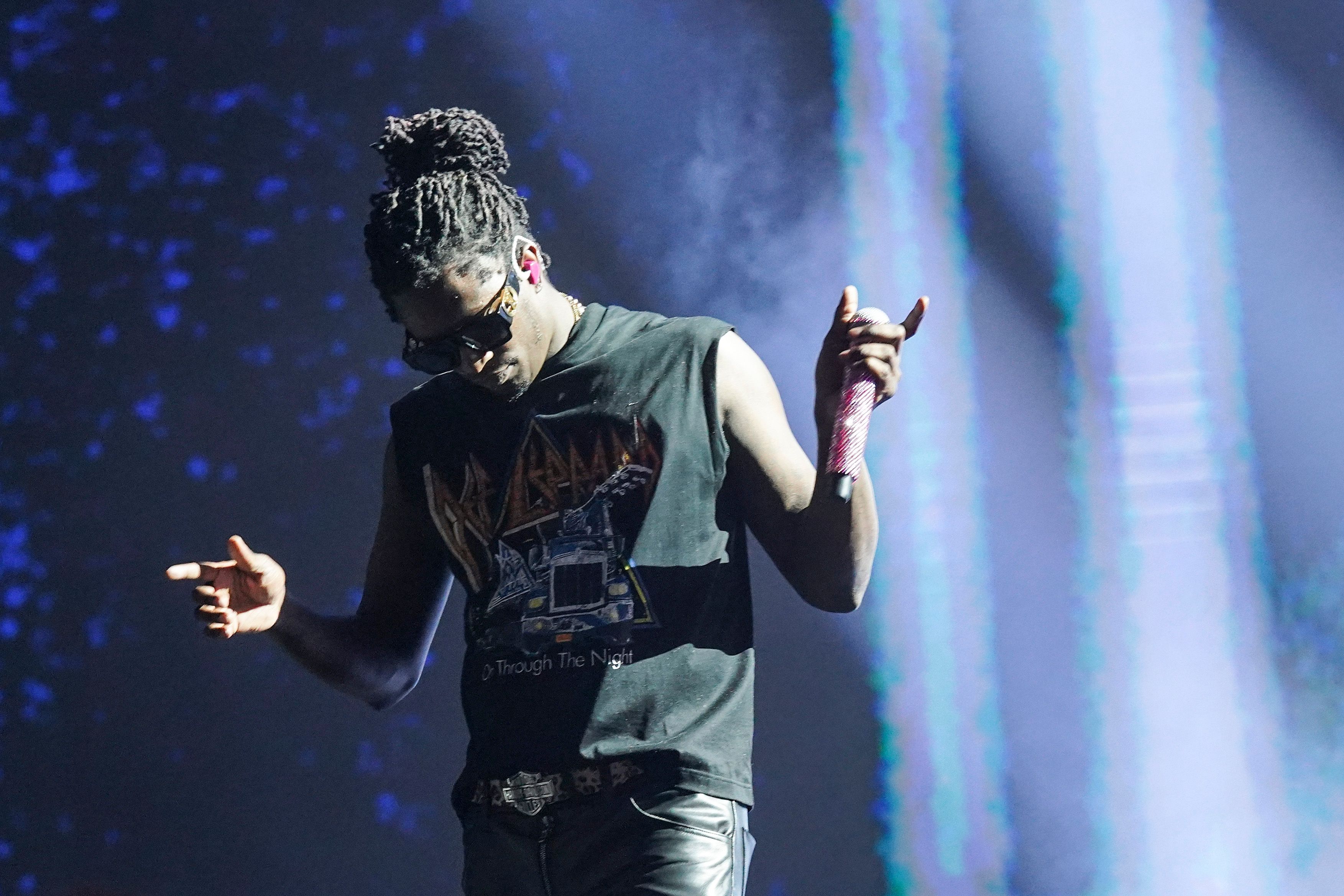
A New Chapter for Young Thug
Young Thug has always been a figure of intrigue, and his latest album, Uy Scuti, is no exception. As the rapper prepares to release his highly anticipated project, it's clear that controversy continues to follow him like a shadow. This comes on the heels of his recent release from jail last fall, adding another layer of complexity to an already charged situation.
The album’s title, Uy Scuti, is inspired by one of the largest stars in the galaxy, which immediately sets the tone for something out of this world. However, what truly caught the attention of fans and critics alike was the cover art. The image features Young Thug with his skin bleached to a supernatural white, reminiscent of Druski's recent viral skit, complete with blue eyes. This bold choice sparked immediate reactions across social media, with many questioning the motives behind such a striking visual.
In addition to the cover art, Young Thug took his antics a step further by applying the same effect to the faces of all the album’s featured collaborators, including Travis Scott and T.I. The internet was especially entertained by the transformation of 21 Savage, who became known as "Vitiligo 21 Savage." This move not only added to the buzz around the album but also highlighted the ongoing fascination with Young Thug's unconventional approach to self-expression.
Despite the attention garnered by the cover art, there seems to be little connection between the visual and the content of the album itself. The first track on Uy Scuti includes a rhyme scheme where Young Thug uses the N-word with the hard “er” sound. However, this moment doesn’t seem to tie into the overall theme or message of the album, leading many to speculate that the cover art was more of a marketing stunt than a meaningful statement.
This isn't the first time Young Thug has made headlines for his eccentric choices. From wearing a dress on one of his seminal mixtapes to posing in a fully naked manner on his breakout project, he has consistently challenged traditional notions of masculinity and identity. These choices often stand in stark contrast to the street tough guy image portrayed in his raps, yet they are integral to his artistic expression.
In a recent appearance on the It’s Up There podcast, Young Thug admitted that the cover art wasn't meant to be taken too seriously. He described it as “some fun shit,” suggesting that the primary goal was to generate excitement rather than provoke deep thought. When he did offer some introspection, he mentioned that the cover could be interpreted as a commentary on whiteness being the benchmark for success in the music industry. “You want to be the biggest in this [industry]? You gotta be Eminem,” he said with a wry laugh.
However, it's worth noting that there are no songs or passages on Uy Scuti that directly engage with this idea. This suggests that the cover art may have been a last-minute tactic to generate interest rather than a central theme of the album. Despite this, Young Thug remains at his best when he manages to spark conversations both about his antics and the music that accompanies them.
As fans continue to dissect the meaning behind the cover art and the tracks on Uy Scuti, it's clear that Young Thug is once again pushing boundaries and challenging expectations. Whether it's through his music, his visuals, or his public persona, he continues to captivate and provoke, ensuring that he remains a central figure in the ever-evolving landscape of hip-hop.

Post a Comment